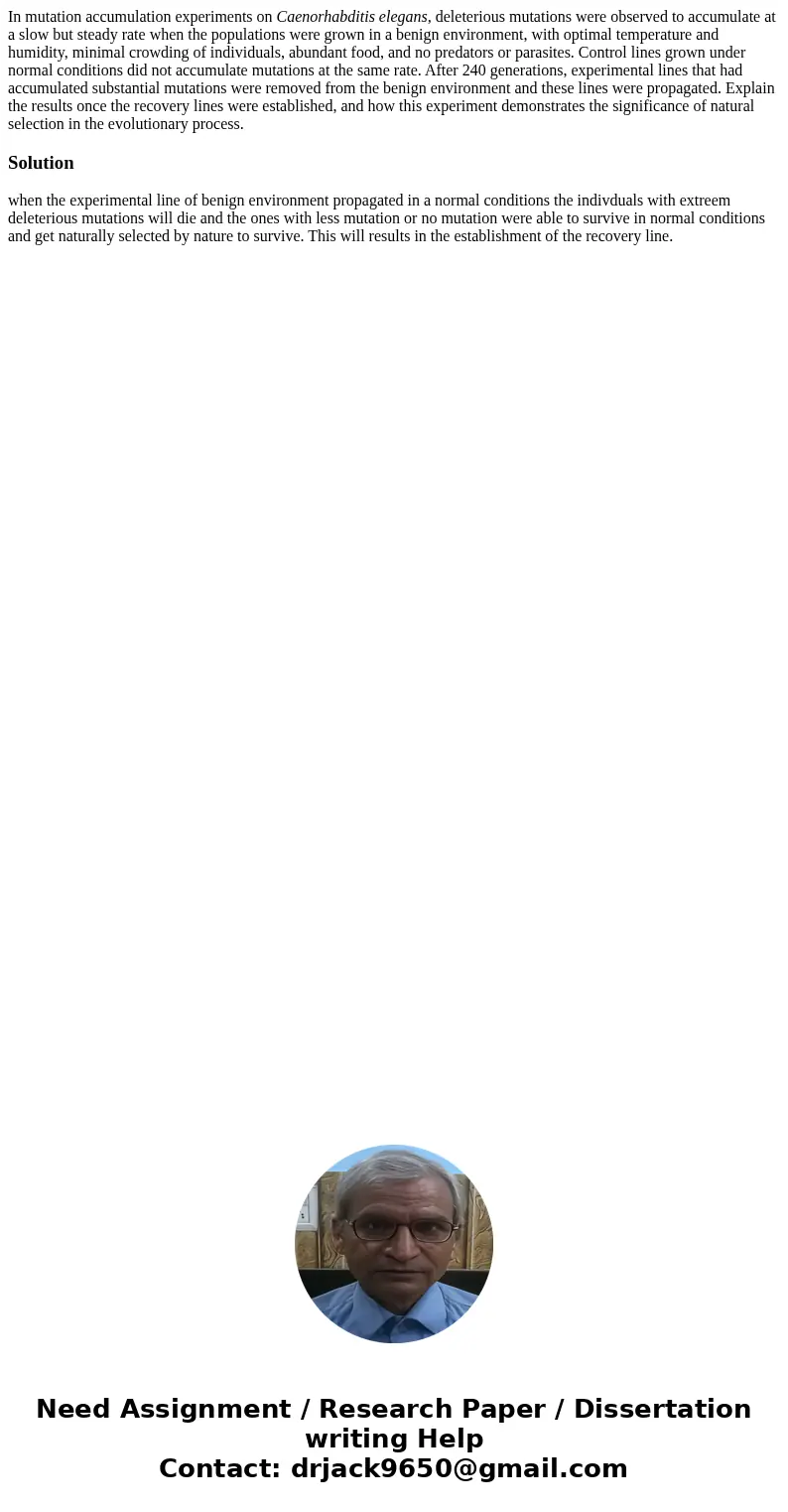In mutation accumulation experiments on Caenorhabditis elega
In mutation accumulation experiments on Caenorhabditis elegans, deleterious mutations were observed to accumulate at a slow but steady rate when the populations were grown in a benign environment, with optimal temperature and humidity, minimal crowding of individuals, abundant food, and no predators or parasites. Control lines grown under normal conditions did not accumulate mutations at the same rate. After 240 generations, experimental lines that had accumulated substantial mutations were removed from the benign environment and these lines were propagated. Explain the results once the recovery lines were established, and how this experiment demonstrates the significance of natural selection in the evolutionary process.
Solution
when the experimental line of benign environment propagated in a normal conditions the indivduals with extreem deleterious mutations will die and the ones with less mutation or no mutation were able to survive in normal conditions and get naturally selected by nature to survive. This will results in the establishment of the recovery line.

 Homework Sourse
Homework Sourse